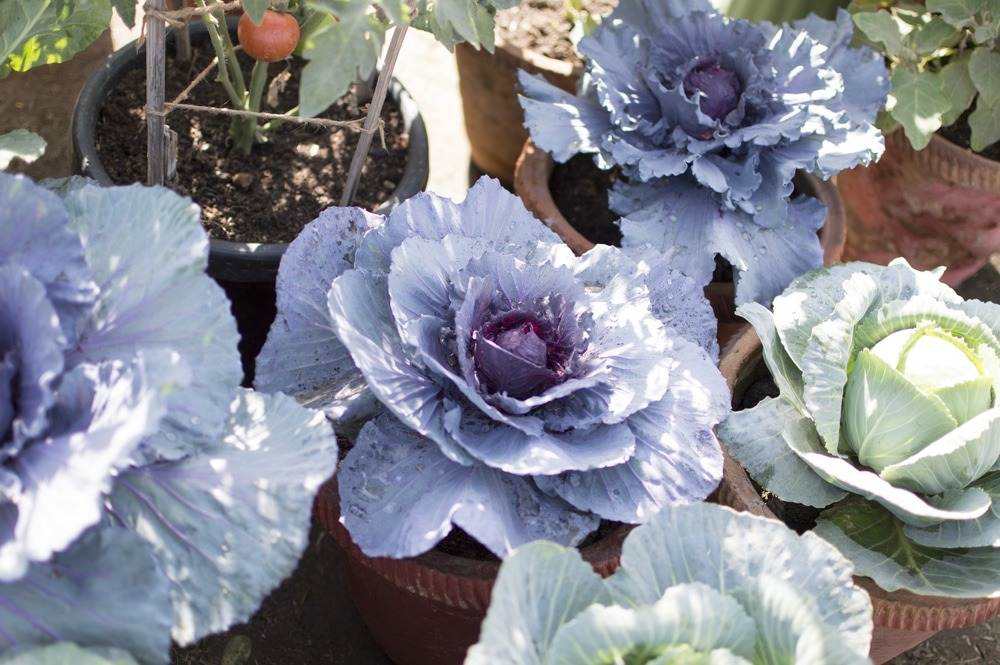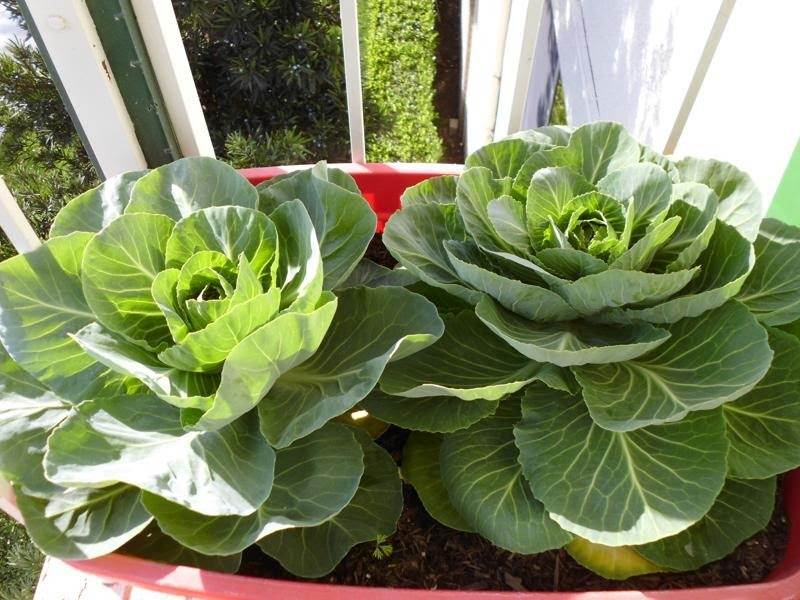Do you know that growing cabbage in a container is incredibly easy? You can quickly grow this leafy vegetable that is packed with fiber, nutrients, and is low in calories without the fuss of digging up a garden bed. Cabbages perform exceptionally well in containers and the process of growing it is also enjoyable! And once you succeed, let’s turn them into a delightful meal or add directly to salads for a delicious treat!
Choose The Right Cabbages
When you’re setting out to grow cabbages in containers, the first step is selecting the right variety. Luckily, cabbages come in many shapes and sizes, so you have options. For containers, consider smaller and compact varieties like “Mini Ball,” “Gonzales,” or “Yankee.” These are more suitable for limited spaces.

You can also opt for “Napa” or “Chinese” cabbages, which tend to be more container-friendly. They offer a sweet and mild flavor that’s perfect for salads and stir-fries. When you’re at the nursery, check for healthy-looking seedlings with crisp, green leaves.
Grow Cabbages In Containers

Now that you’ve chosen your cabbage buddies, it’s time to get them settled in their container home. First, select a container that’s at least 12 inches deep and 18 inches wide, with good drainage holes. Cabbages like room to spread their roots. Fill your container with a well-draining potting mix, enriched with compost.

Plant your cabbage seedlings about 18 inches apart to give them plenty of space. They need around 6 hours of sunlight each day, so find a sunny spot on your balcony or patio. Make sure to water consistently and keep the soil evenly moist. If you’re growing in the summer heat, a bit of afternoon shade can help prevent your cabbages from bolting (that’s gardener lingo for flowering, which you want to avoid in cabbages).
Take Care Of Cabbages

Regular care is essential to keep your cabbage happy and thriving. Remember to watch out for common cabbage culprits like aphids and cabbage worms. If you spot these pests, handpick them or use neem oil to keep them at bay. A sprinkling of diatomaceous earth around your cabbage container can also deter unwanted visitors.

A rule of thumb is to keep the soil consistently moist. And when your cabbages are about 4-5 inches tall, feed them with a balanced, all-purpose fertilizer. Cabbages are shallow-rooted, so they’ll appreciate a good mulch blanket to keep the soil cool and moist. While cabbages are relatively low-maintenance, they might still need some support as they grow. A few stakes to keep them upright is like giving them a friendly hand to hold.
Harvesting And Storing

When your cabbages have formed solid, firm heads (usually around 75-85 days after planting), it’s time to reap the rewards of your cabbage-growing adventure. Use a sharp knife to cut the cabbage head from the stem, leaving a few outer leaves to protect any remaining growth. If you’re dealing with smaller varieties like Napa cabbage, you can harvest the whole head at once.

As for storage, you can keep your freshly harvested cabbages in the refrigerator for several weeks. If you have extra cabbages, you can also blanch and freeze them for longer-term storage. Just like finding space in your fridge for that extra pizza box, you’ll make room for these nutritious powerhouses.
We hope you’re satisfied with the guide of growing cabbage in a container from selection to care, all the way to the glorious harvest. With a bit of attention and care, you’ll have crisp, fresh cabbages at your fingertips for coleslaws, salads, and stir-fries.
